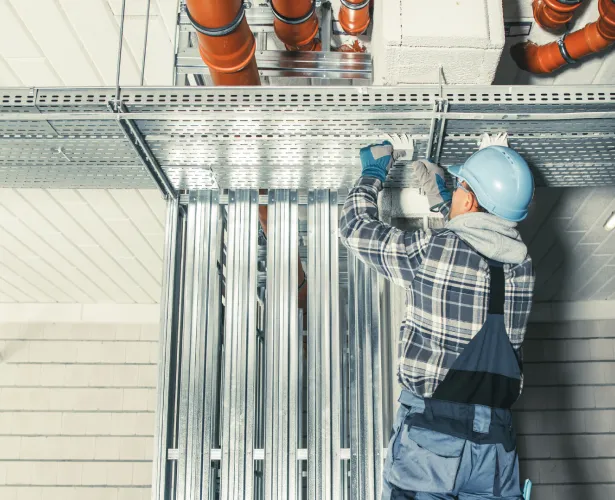When it comes to industrial settings, lighting is not just a matter of convenience but also safety and productivity. Proper lighting improves visibility, reduces errors, and prevents accidents. However, choosing the right lighting system and fixtures for industrial applications can be challenging, given the variety of types, technologies, and standards available. In this article, we will explore the essentials of effective and energy-efficient industrial lighting, from assembly lines to warehouses.
Types of lamps and fixtures
Not all lamps and fixtures are created equal, and each type has its strengths and weaknesses depending on the purpose and environment. For instance, incandescent lamps are cheap but not very durable and efficient, while fluorescent lamps are energy-saving but more expensive and contain hazardous chemicals. LED lamps, on the other hand, are becoming the go-to lighting technology for industrial settings due to their long lifespan, low heat output, directional illumination, and compatibility with sensors and controls. As for fixtures, they can vary in terms of installation, size, material, and protection. Some common types of fixtures include high bay lights, low bay lights, linear fixtures, floodlights, and emergency lights.
Illumination levels and distribution
Another crucial aspect of industrial lighting is the illumination levels and distribution. The amount of light required depends on the task performed, the location of the worker, and the nature of the surroundings. For instance, assembly lines may need brighter and more concentrated light than storerooms, while hazardous areas require explosion-proof and low-glare lighting. The distribution of light also matters, as uneven or insufficient illumination can cause eye strain, errors, and accidents. Ideally, lighting should be uniform, shadow-free, and adjustable to different angles and heights.
Lighting controls
One way to optimize industrial lighting is through the use of controls and sensors. Lighting controls allow for customized settings, dimming options, time schedules, and remote operation, which can save energy, enhance comfort, and extend lamp life. Some popular types of lighting controls for industrial applications include occupancy sensors, daylight sensors, timers, and dimmers. Sensors can also help to detect motion, temperature, humidity, and sound, which can trigger automatic lighting adjustments or alarms.
Maintenance and safety
Industrial lighting is not a one-time investment but rather a continuous process that requires maintenance and inspection. Regular checks of lamps, fixtures, wiring, and controls can prevent wiring faults, circuit overloads, or lamp failures. Moreover, cleaning of the fixtures, dusting of the lamps, and replacement of the lenses can improve the illumination quality and reduce the risk of contamination or damage. As for safety, industrial lighting should comply with the applicable norms and standards such as the National Electrical Code (NEC), the Occupational Safety and Health Administration (OSHA), and the International Electrotechnical Commission (IEC). These regulations cover the voltage, frequency, wiring, grounding, and protection requirements for industrial lighting.
Benefits of effective industrial lighting
The benefits of effective and efficient industrial lighting are numerous and substantial. Improved productivity, reduced error rates, and enhanced morale are among the main advantages of comfortable and adequate lighting. Moreover, energy savings, lower maintenance costs, and longer lifespan are economic benefits that can result from the proper selection and use of lamps, fixtures, and controls. Last but not least, safety and health benefits are paramount, and proper industrial lighting can prevent accidents, eye strain, headaches, and other health issues.
Conclusion:
Choosing the right industrial lighting system and fixtures is a complex decision that requires attention to multiple factors such as lamps, fixtures, illumination, controls, maintenance, and safety. However, by following the best practices and standards, industrial facilities can achieve both a comfortable and productive environment and a sustainable and cost-effective lighting strategy. Contact us today to learn more about how we can help you light your facility effectively and efficiently.

